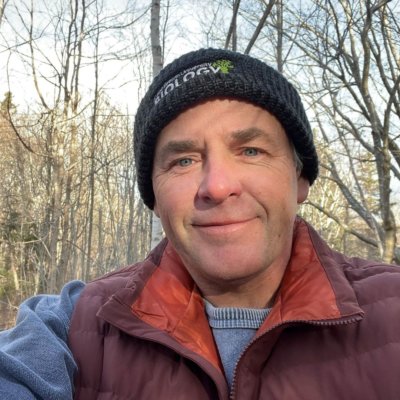Marine biologist on mission to revive Cape Breton oyster industry
By Lola Augustine Brown | Photo provided
Working alongside Indigenous community members and knowledge-holders, research led by Rod Beresford (MSc’95, PhD’19) is helping oyster leaseholders on Bras d’Or Lake see a bright future for a former multi-million-dollar industry decimated by a parasite in 2002.

Working alongside Indigenous community members and knowledge-holders, research led by Rod Beresford (MSc’95, PhD’19) is helping oyster leaseholders on Bras d’Or Lake
In 2002, the oyster industry in and around Bras d’Or, N.S. was thriving. There were more than 100 local oyster leaseholders, many of whom were Indigenous. A state-of-the-art oyster processing plant had just been built by the Potlotek Mi’kmaw community to keep up with demand. Growers were investing in tools and technology. But by the summer of that year, the entire industry had been decimated by a tiny parasite.
Now, Rod Beresford (MSc’95, PhD’19) is leading research that is finding a way to bring the industry back to life. He’s partnered with excited locals who’ve held on to hope that one day things might just turn around. “They watched the lights go out on an industry that they had invested heavily in, and now they are watching the lights starting to glow again,” Beresford says.
Together with 12 oyster leaseholders, Beresford and his team suspended oysters in cages and held oysters on the lake bed to see whether suspended culture is a better method for growing oysters in the presence of the parasite. “It turns out it is. For the first time in 20 years, there are oysters big enough to sell on the Bras d’Or,” Beresford says. “We’ve taken a slow and methodical approach to the research with our partners to get to a state where we are somewhat confident that we are going to have an oyster industry in the Bras d’Or lake again.”
New science, traditional methods
A key element in the research’s success is that Beresford and his team have worked in partnership with leaseholders, many of whom have held family leases for 50-60 years.
These leaseholders include Anita Basque from Potlotek First Nation and Joe Googoo from Waycobah First Nation. Basque has been harvesting oysters since childhood and was a one-time fisheries manager for the community. Googoo’s family has been harvesting oysters since the ‘70s.
“These guys have been around these animals for a long time. They know them a lot better than I do,” Beresford says.
Aquaculture expert Robin Stuart is also part of the research team. “We’re basically a gang of people tied together trying to slowly crawl up this hill and make it a successful endeavour again,” Beresford says.
A unique career path
Beresford describes himself as an oddball who took an unconventional route to get to where he is now. “I graduated from CBU, then did a masters in human pathology at Dal. I worked there as a technician for a year before going to work in the RCMP’s crime lab for a couple of years which was an amazing opportunity,” Beresford explains. “Then they started the Tar Ponds cleanup in Sydney and I worked on that with Health Canada, and then an opportunity came up to teach at CBU.”
He then figured that if he was going to be a university professor, he’d better do a PhD. After reaching out to a few universities in 2014, he was approached by Dr. Neil Ross with the National Research Council (an adjunct professor at the time), who had a similar area of interest and agreed to be Beresford’s PhD supervisor at Dalhousie.
“To be honest, it took me a long time to complete my PhD and I had a lot of rough road in between, but eventually I finished it, and there were a lot of kind, understanding and supportive people at Dal who enabled that to happen,” Beresford says, “I couldn’t have done it without their encouragement in the toughest of times.”
Initially, Beresford had no interest in walking across the stage at graduation in 2019 but was talked into attending by his family, and was so glad that he did. “I was surrounded by the people that had supported me. They knew the challenges and my journey to get there, and it made me so happy to have them congratulate me,” he says.
The perseverance needed on his own educational journey and now in his work revitalizing Cape Breton’s oyster farming industry has inspired Beresford’s creative thinking in ways that are helping his community, as has working closely with community members. “So you’ve got to trust those who know more than you when it comes to this stuff.”